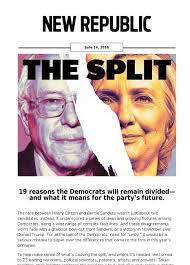History solves nothing
Sure, sure. Putin loves Trump.
“Worse than Watergate”, in this context, is hilarious. Reminds me of something I read, with confusion on the part of Mao ZeDong over the scandals of Richard Nixon — “What’s the deal here, exactly?” The funny thing here is a role reversal — 2008 saw the Republican Convention and McCain taking to the stand and declaring “We are all Georgians” as against a (supposed) isolationist stance of the Democrats wondering “No we aren’t” (and in Oregon the Republican Senate incumbent Gordeon Smith trying to beat Jeff Merkley with an ad making a deal about him eating a hot dog out of touch with current Russian transgressions.)
So, we have have releases of email showing what everyone already knew — the DNC, under the stewardship of Debra Wasserman Schulz, was an operation in league with the presidential ambition of one Hillary Clinton. Exasperating the tension of the Democratic divide, the streets outside the convention showing an ap photo of Sanders supporter waving insisting their guy really won.
Bernie Sanders at once tries his best imitation of Goldwater, circa 1960, insisting to his restless supporters to “Grow Up, and Get to Work”. And then, unlike Goldwater, bolts the party he was only temporarily a member of anyways. Then again, Sanders knows the actuaries, and knows he’s not about to be the nominee in 2020.
  An interesting pile of opines in the latest New Republic, discussing what Hillary versus Bernie represents. The starter is Rick
 An interesting pile of opines in the latest New Republic, discussing what Hillary versus Bernie represents. The starter is Rick
Start in 1924, when the party cleaved nearly in two. That year, at Madison Square Garden, the Democratic convention took a record 103 ballots and 16 days to resolve a fight between the party’s urban wing and its conservative opponents. How conservative? Well, the convention was nicknamed the “Klanbake,†because one of the great issues at stake was—no kidding—whether the KKK was a good or a bad thing. The divide was so heated that tens of thousands of hooded Klansmen held a rally and burned crosses to try to bully the party into meeting their demands.
Eight years later, under Franklin Roosevelt, the party’s urban, modernist wing established what would become a long hegemony over its reactionary, Southern one. But that hegemony remained sharply contested from the very beginning. In 1937, bipartisan opponents of FDR banded together to forge the “Conservative Manifesto.†Co-authored by a Southern Democrat, the manifesto called for lowering taxes on the wealthy, slashing government spending, and championing private enterprise. Hillary Clinton’s eagerness to please Wall Street can be traced, in part, to that ideological split during the New Deal.
“Urban, modernist” is a funny phrase, and seems to punt on the problem of using “progressive” or “Liberal” to describe what the heck was happening.  Go back even further, and you have a split between the “urbanist” wing of neo-Grover Cleveland and Tammany hacks and the “populist” agraian wing of Bryan. In 1932, the base of Roosevelt’s support for the nomination grew out of a connection back to the McAdoo forces from that convention, as against Alfred Smith who had in 1928 taken the party in the corporate direction of his campaign chair and the Du Ponts– in a kind of DLCish fit to assuage the party in these times of 1920s prosperity (except with alcohol…)
But then we get to the complication of describing individual actors…
Indeed, over the years, many of the most “liberal†Democrats have remained sharply conservative on economic questions. Eugene McCarthy, the “peacenik†candidate of 1968, ended up backing Ronald Reagan. Dan Rostenkowski, the lunch-pail chairman of the House Ways and Means Committee, proposed a tax package in 1981 that was more corporate-friendly than Reagan’s. Jerry Brown of California, long derided as “Governor Moonbeam,†campaigned for president in 1992 on a regressive flat tax. That same year, Bill and Hillary Clinton won the White House with the business-funded support of the Democratic Leadership Council, which sought to downplay the “big government†solutions championed by FDR.
McCarthy was very much busy in a contrarian-ist spiral, Brown has had about 4 political lives and a need to fulfill the “idiosyncratic and eccentric” venture folds in nicely in the 1992 run for president, and Rostenkowski — look into it — bowed in part by the 1980 landslide and the seeming Big Capitalist times, partially showing the lack of differences between the parties in gnabbing at some of same donors.
 If Hillary has any doubts about embracing the economic agenda laid out by Sanders, she should ask the insurgent of 1992: William Jefferson Clinton. The man who ended a dozen years of presidential exile for the Democrats didn’t do it simply by promising to get tough on crime and to “end welfare as we know it.†He also pledged $80 billion in federal investments to improve America’s cities and to create four million new jobs—not to mention, of course, a plan to deliver health care to all Americans.
Interesting contradiction with premises from earlier in the article, but I always content Clinton 1992 can’t really be said to be the party insurgent. If he was the insurgent — and he was ultimately favored by the big money donors who seemed to make it a point to keep his fund-raisers going him as Gennifer Flowers scandal hit– who was the establishment pick?